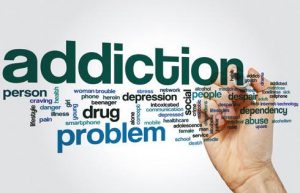Lethal Intoxication
According to a recent WHO report, more than 3 million people died as a result of alcohol abuse in last two years. Countries need to effectively work together to reduce the negative health and social consequences of alcohol consumption.
By Amresh K Tiwary
 A global phenomenon, alcohol consumption is now getting worldwide attention due to its harmful impact on the society. Alcohol is classified as psychoactive substance which produces dependence. It has not only grave implications on health but also social and economic aspects. There are a number of factors which determine alcohol consumption in a society.
A global phenomenon, alcohol consumption is now getting worldwide attention due to its harmful impact on the society. Alcohol is classified as psychoactive substance which produces dependence. It has not only grave implications on health but also social and economic aspects. There are a number of factors which determine alcohol consumption in a society.
Alcohol consumption is a causal factor in more than 200 diseases and injury conditions. Drinking alcohol is associated with a risk of developing health problems such as mental and behavioural disorders, including alcohol dependence, major non communicable diseases such as liver cirrhosis, cancers and cardiovascular diseases, as well as injuries resulting from violence and road clashes and collisions.
Age group, gender, socio-economic factors, education, certain occupation, familial tendency, peer pressure etc are individual determinants of alcohol intake.
Early age of initiation of alcohol intake leads to higher rates of diseases due to abuse, accidents and injuries.
 A significant proportion of the disease burden attributable to alcohol consumption arises from unintentional and intentional injuries, including those due to road traffic crashes, violence, and suicides, and fatal alcohol-related injuries tend to occur in relatively younger age groups.
A significant proportion of the disease burden attributable to alcohol consumption arises from unintentional and intentional injuries, including those due to road traffic crashes, violence, and suicides, and fatal alcohol-related injuries tend to occur in relatively younger age groups.
A variety of factors have been identified at the individual and the societal level, which Environmental factors include economic development, culture, availability of alcohol, and the comprehensiveness and levels of implementation and enforcement of alcohol policies. For a given level or pattern of drinking, vulnerabilities within a society are likely to have similar differential effects as those between societies. Although there is no single risk factor that is dominant, the more vulnerabilities a person has, the more affect the levels and patterns of alcohol consumption and the magnitude of alcohol – related problems in populations. likely the person is to develop alcohol-related problems as a result of alcohol consumption.
Conceptual causal model of alcohol consumption and health outcomes The chronic and acute health outcomes of alcohol consumption in populations is largely determined by two separate but related dimensions of drinking:
- The total volume of alcohol consumed, and
- The pattern of
 The context of drinking plays an important role in occurrence of alcohol-related harm, particularly associated with health effects of alcohol intoxication, and, on rare occasions, also the quality of alcohol consumed. Alcohol consumption can have an impact not only on the incidence of diseases, injuries and other health conditions, but also on the course of disorders and their outcomes in individuals.
The context of drinking plays an important role in occurrence of alcohol-related harm, particularly associated with health effects of alcohol intoxication, and, on rare occasions, also the quality of alcohol consumed. Alcohol consumption can have an impact not only on the incidence of diseases, injuries and other health conditions, but also on the course of disorders and their outcomes in individuals.
There are gender differences in alcohol- related mortality and morbidity, as well as levels and patterns of alcohol consumption. The percentage of alcohol-attributable deaths among men amount to 7.7 % of all global deaths compared to 2.6 % of all deaths among women. Total alcohol per capita consumption in 2010 among male and female drinkers worldwide was on average 19.4 litres for males and 7.0 litres of pure alcohol for females.
 According to Prof (Dr) Nimesh G Desai,
According to Prof (Dr) Nimesh G Desai,
Professor of Psychiatry and Director, Institute of Human Behaviour and Allied Sciences (IHBAS), Delhi, “Alcohol is a psychoactive substance with dependence-producing properties that has been widely used in many cultures for centuries. The harmful use of alcohol causes disease, and social and economic burden in societies. It can also result in harm to other people, such as family members, friends, co-workers and strangers. Moreover, reckless consumption of alcohol results in a significant health, social and economic burden on society at large.”

Dr A K Agarwal, Professor of Excellence, Medical Advisor (Innovation) Apollo Hospital, New Delhi, said, “The latest causal relationships are those between harmful drinking and incidence of infectious diseases such as tuberculosis as well as the incidence and course of HIV/AIDS. Alcohol consumption by an expectant mother may cause fetal alcohol syndrome and pre-term birth complications.”
 Dr Suneela Garg, Director Professor, Department of Community Medicine, Maulana Azad Medical Institute, New Delhi, said, “Social factors like cultural practices, level of development, alcohol production, distribution and marketing strategies are important factors. In India,
Dr Suneela Garg, Director Professor, Department of Community Medicine, Maulana Azad Medical Institute, New Delhi, said, “Social factors like cultural practices, level of development, alcohol production, distribution and marketing strategies are important factors. In India,
alcohol consumption in social gatherings and on some religious occasions is an accepted norm. Similarly, consumption of alcoholic beverages is prevalent in many tribal and Ways to reduce the harmful use of alcohol
village societies around the world. Individual factors also play a role in the pattern of alcohol consumption.”
The health, safety and socioeconomic problems attributable to alcohol can be effectively reduced and require actions on the levels, patterns and contexts of alcohol consumption and the wider social determinants of health.
Countries have a responsibility for formulating, implementing, monitoring and evaluating public policies to reduce the harmful use of alcohol. Substantial scientific knowledge exists for policy-makers on the effectiveness and cost-effectiveness of the following strategies:
- Regulating the marketing of alcoholic beverages (in particular to younger people);
- Regulating and restricting the availability of alcohol;
- Enacting appropriate drink-driving policies;
- Reducing demand through taxation and pricing mechanisms;
- Raising awareness of public health problems caused by harmful use of alcohol and ensuring support for effective alcohol policies;
- Providing accessible and affordable treatment for people with alcohol-use disorders; and
- Implementing screening and brief interventions programmes for hazardous and harmful drinking in health

Prof Ramesh K. Goyal, Vice-Chancellor, Delhi Pharmaceutical Sciences & Research University (DPSRU), said, “The market forces which are promoting alcohol should be brought under legislative control. Regulating the marketing of alcohol is essential since it has important impact on younger population.
Restricting the availability of alcohol can be effective. Legislations should be made and strictly enforced. Taxation policies can have huge impact on alcohol demand and supply system. Raising public awareness about the harmful effects of alcohol is essential. Innovative strategies should be used including mass media campaigns for the same. More and more counselling and rehabilitation centres should be opened for those in need, all over the country. Those
who recover should be integrated within the society without stigma and discrimination. All healthcare workers, social workers should be trained in counselling alcohol users.”
WHO Response
The harmful use of alcohol is one of the leading risk factors for population health worldwide and has a direct impact on many health-related targets of the Sustainable Development Goals (SDGs), including those for maternal and child health, infectious diseases (HIV, viral hepatitis, tuberculosis), non-communicable diseases and mental health, injuries and poisonings. Alcohol is specifically mentioned under health target 3.5: “Strengthen the prevention and treatment of substance use, including narcotic drug abuse and harmful use of alcohol”.
 The WHO aims to reduce the health burden caused by the harmful use of alcohol and, thereby, to save lives, prevent injuries and diseases and improve the well-being of individuals, communities and society at large. It emphasizes the development, implementation and evaluation of cost- effective interventions for harmful use of alcohol as well as creating, compiling and disseminating scientific information on alcohol use and dependence, and related health and social consequences.
The WHO aims to reduce the health burden caused by the harmful use of alcohol and, thereby, to save lives, prevent injuries and diseases and improve the well-being of individuals, communities and society at large. It emphasizes the development, implementation and evaluation of cost- effective interventions for harmful use of alcohol as well as creating, compiling and disseminating scientific information on alcohol use and dependence, and related health and social consequences.
The “Global strategy to reduce the harmful use of alcohol”, negotiated and agreed by WHO Member States in 2010, represents international consensus that reducing the harmful use of alcohol and its associated health and social burden is a public health priority. The strategy provides guidance for action at all levels, including 10 recommended target areas for policy options and interventions for national action to reduce the harmful use of alcohol and the main components for global action to support and complement activities at country level.
The update of the evidence on cost- effectiveness of policy options and interventions undertaken in the context of an update of Appendix 3 of the Global Action Plan for the Prevention and Control of n Non communicable Diseases 2013- 2020 resulted in a new set of enabling and focused recommended actions to control the menace of alcohol. The most cost-effective actions, or “best buys”, include increasing taxes on alcoholic beverages, enacting and enforcing bans or comprehensive restrictions on exposure to alcohol advertising across multiple types of media, and enacting and enforcing restrictions on the physical availability of retailed alcohol.
With growing awareness of the impact of alcohol consumption on global health and an increase in international frameworks for action, the demand for global information on alcohol consumption and alcohol-attributable and alcohol-related harm, as well as related policy responses, has increased significantly. The Global Information System on Alcohol and Health (GISAH) has been developed by WHO to dynamically present data on levels and patterns of alcohol consumption, alcohol-
Footnotes
- Based on the Global Status Report on Alcohol and Health
- The Global Strategy refers only to public- health effects of alcohol consumption, without prejudice to religious beliefs and cultural norms in any The concept of “harmful use of alcohol” in this context is different from “harmful use of alcohol” as a diagnostic category in the ICD-10 Classification of Mental and Behavioural Disorders (WHO, 1992).
- The disability-adjusted life year (DALY) extends the concept of potential years of life lost due to premature death to include equivalent years of “healthy” life lost by virtue of being in states of poor health or attributable health and social consequences and policy responses at all levels.
 Achieving reduction in the harmful use of alcohol in line with the targets included in the SDG 2030 agenda and the WHO Global Monitoring Framework for Non-communicable Diseases requires concerted action by countries, effective global governance and appropriate engagement of all relevant stakeholders. By effectively working together, the negative health and social consequences of alcohol can be reduced.
Achieving reduction in the harmful use of alcohol in line with the targets included in the SDG 2030 agenda and the WHO Global Monitoring Framework for Non-communicable Diseases requires concerted action by countries, effective global governance and appropriate engagement of all relevant stakeholders. By effectively working together, the negative health and social consequences of alcohol can be reduced.
A Frightening Picture
 According a report released recently by the World Health Organization (WHO), more than 3 million people died as a result of alcohol abuse in last two years. This represents one in 20 deaths. More than three quarters of these deaths were among men. Overall, the harmful use of alcohol causes more than 5% of the global disease burden.
According a report released recently by the World Health Organization (WHO), more than 3 million people died as a result of alcohol abuse in last two years. This represents one in 20 deaths. More than three quarters of these deaths were among men. Overall, the harmful use of alcohol causes more than 5% of the global disease burden.
WHO’s Global status report on alcohol and health 2018 presents a comprehensive picture of alcohol consumption and the disease burden attributable to alcohol worldwide. It also describes what countries are doing to reduce this burden.
Dr Tedros Adhanom Ghebreyesus, Director-General of WHO, said, “Far too many people, their families and communities suffer the consequences of the harmful use of alcohol through violence, injuries, mental health problems and diseases like cancer and stroke,” said “It’s time to step up action to prevent this serious threat to the development of healthy societies.”
Of all deaths attributable to alcohol, 28% were due to injuries, such as those from traffic crashes, self-harm and interpersonal violence; 21% due to digestive disorders; 19% due to cardiovascular diseases, and the remainder due to infectious diseases, cancers, mental disorders and other health conditions.
Despite some positive global trends in the prevalence of heavy episodic drinking and number of alcohol-related deaths since 2010, the overall burden of disease and injuries caused by the harmful use of alcohol is unacceptably high, particularly in the European Region and the Region of Americas.
 Globally an estimated 237 million men and 46 million women suffer from alcohol-use disorders with the highest prevalence among men and women in the European region (14.8% and 3.5%) and the Region of Americas (11.5% and 5.1%). Alcohol-use disorders are more common in high-income countries.
Globally an estimated 237 million men and 46 million women suffer from alcohol-use disorders with the highest prevalence among men and women in the European region (14.8% and 3.5%) and the Region of Americas (11.5% and 5.1%). Alcohol-use disorders are more common in high-income countries.
Global consumption predicted to increase in the next 10 years An estimated 2.3 billion people are current drinkers. Alcohol is consumed by more than half of the population in three WHO regions – the Americas, Europe and the Western Pacific. Europe has the highest per capita consumption in the world, even though its per capita consumption has decreased by more than 10% since 2010. Current trends and projections point to an expected increase in global alcohol per capita consumption in the next 10 years, particularly in the South-East Asia and Western Pacific Regions and the Region of the Americas.
How much alcohol are people drinking?
The average daily consumption of people who drink alcohol is 33 grams of pure alcohol a day, roughly equivalent to 2 glasses (each of 150 ml) of wine, a large (750 ml) bottle of beer or two shots (each of 40 ml) of spirits.
Worldwide, more than quarters (27%) of all 15–19-year-olds are current drinkers. Rates of current drinking are highest among 15–19-year-olds in Europe (44%), followed by the Americas (38%) and the Western Pacific (38%). School surveys indicate that, in many countries, alcohol use starts before the age of 15 with very small differences between boys and girls.
Worldwide, 45% of total recorded alcohol is consumed in the form of spirits. Beer is the second alcoholic beverage in terms of pure alcohol consumed (34%) followed by wine (12%). Worldwide there have been only minor changes in preferences of alcoholic beverages since 2010. The largest changes took place in Europe, where consumption of spirits decreased by 3% whereas that of wine and beer increased.
In contrast, more than half (57%, or 3.1 billion people) of the global population aged 15 years and over had abstained from drinking alcohol in the previous 12 months.
More countries need to take action
Dr. Vladimir Poznyak, Coordinator of WHO’s Management of Substance Abuse Unit, said, “All countries can do much more to reduce the health and social costs of the harmful use of alcohol. Proven, cost-effective actions include increasing taxes on alcoholic drinks, bans or restrictions on alcohol advertising, and restricting the physical availability of alcohol.”
Higher-income countries are more likely to have introduced these policies, raising issues of global health equity and underscoring the need for greater support to low- and middle-income countries.
Almost all (95%) countries have alcohol excise taxes, but fewer than half of them use other price strategies such as banning below-cost selling or volume discounts. The majority of countries have some type of restriction on beer advertising, with total bans most common for television and radio but less common for the internet and social media.
“We would like to see Member States implement creative solutions that will save lives, such as taxing alcohol and restricting advertising. We must do more to cut demand and reach the target set by governments of a 10% relative reduction in consumption of alcohol globally between 2010 and 2025,” added Dr Tedros. Reducing the harmful use of alcohol will help achieve a number of health-related targets of the Sustainable Development Goals (SDGs), including those for maternal and child health, infectious diseases, non-communicable diseases and mental health, injuries and poisonings.
Global status report on alcohol and health 2018
The report provides an overview of alcohol consumption and harms in relation to the UN Sustainable Development Goals (Chapter 1), presents global strategies, action plans and monitoring frameworks (Chapter 2), gives detailed information on: the consumption of alcohol in populations (Chapter 3); the health consequences of alcohol consumption (Chapter 4); and policy responses at national level (Chapter 5). In its final chapter 6, the imperative for reducing harmful use of alcohol in a public health perspective is presented. In addition, the report contains country profiles for WHO Member States and appendices with statistical annexes, a description of the data sources and methods used to produce the estimates and references.

